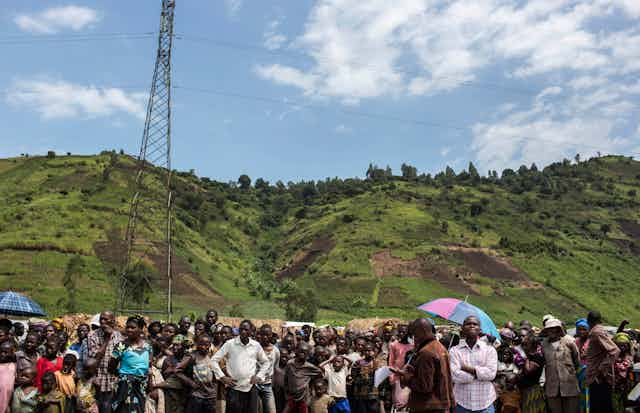2016 was the deadliest year for migrants crossing the Mediterranean; more than 4,800 people died on their way to Europe, despite the fact that fewer attempted the journey than in previous years.
While European migration policies tend to be fragmented, there has been a shift to stepping up a “Fortress Europe” approach. But closing borders won’t work in the long run.
Curbing illegal migration and sealing borders will not stop migration from occurring, but rather improve the business of traffickers and make migrants’ journeys more dangerous.
A year ago, more than 60 heads of states and government met in Malta for the first summit between the European Union (EU) and the African Union (AU) solely dedicated to the topic of migration. Contrary to initial hopes, the Action Plan and Political Declaration that were agreed upon did not make a significant difference to previous EU policies on migration, which tend to be broad and vague.
The EU approach does not take account of the reality of migration, as we have recently pointed out. Nine out of ten international refugees remain in the Global South. And the main burden of the refugee crisis is not in Europe, but among the poorest countries in the world.
Africa, host of displaced people
No continent hosts as many internally displaced people and refugees as Africa.
Take Africa’s youngest nation, South Sudan. Renewed fighting in July this year between groups loyal to President Salva Kiir and former vice president Riek Machar caused another 60,000 people to flee. Today, more than 20% of the South Sudanese population is forcibly displaced.
This is only one example of many. Such conflicts lead to protracted refugee situations and highlight the socioeconomic burden of many African countries.
If we calculate the number of refugees a country hosts in relation to its GDP, we find that the biggest European host country, Germany, has 19 refugees for every US dollar per capita income. In comparison, the Democratic Republic of Congo (DRC) hosts 510 refugees per dollar, a figure that does not even include the two million displaced people by the Congolese war.
Most people on the move in Africa are classified as migrants rather than refugees, though, in practice, motivations are often intertwined.

According to recent figures from the World Bank, around half of all African migrants reside in another African country. Most of the migrants who end up in Europe are, in fact, from north African countries. More favourable economic conditions, geographic closeness and longstanding colonial ties all explain the preponderance of north African migration to Europe.
In Europe, bilateral partnership agreements
For the most part, EU action remains focused on “partnership agreements”, which include both Mobility Partnerships and Common Agendas on Migration and Mobility.
The basic idea behind these agreements is to allow for visa restrictions to be loosened, making way for work visas. In return, partner countries ensure their support in restricting illegal border crossing and accepting repatriation.
The EU takes a carrot-and-stick approach: collaborating countries are rewarded; those who don’t risk trade sanctions and cuts in aid flow. The foundation of these partnerships and the European migration policy agenda in Africa is repatriation and curbing illegal migration, with the rights of migrants and refugees taking a secondary role.

At best this means that only the symptoms of forced displacement are addressed rather than root causes. It also follows a trend of cooperation with dictators and repressive regimes, as highlighted by the EU-sponsored border control projects between Sudan and Eritrea.
In the future, more migrants are likely to come to Europe due to the expected population growth in Africa, and the persistent gaps in living standards between Europe and that continent. Despite economic growth in many African countries, it is unlikely that there will be enough jobs for the surge in population. And substantial economic and political reforms are needed to facilitate structural transformation and spur growth.
New approach needed
In order to deal with the ensuing challenges, as well as to reap the benefits of migration, a new approach in the EU migration policy in Africa is needed.
First, developing countries need adequate resources to deal with their refugee populations. The UNHCR is notoriously underfunded, with promises often left unfulfilled or paid late.
Second, partnership agreements with African governments need to reflect a strong stance on authoritarianism and repression. Otherwise, the EU cannot speak of addressing root causes of forced displacement.
Third, legal forms of migration need to be opened up. Germany is co-hosting the Global Forum on Migration and Development in 2017 alongside Morocco, offering a real chance to push for a global compact on safe, regular and orderly migration.
Legal migration also offers benefits in light of Europe’s ageing population. Important developments include temporary working visas or triple-win approaches, which are agreements that benefit the migrant, the host and the country of origin. The migrant worker receives vocational training in the host country and works there for a given time before returning home with new skills.
Finally, a sustainable and coherent migration policy has to tackle the root causes of migration. This requires a clear commitment to streamlining the EU’s foreign, trade and development policies in Africa.
As long as the EU strikes deals with dictators and pushes for the implementation of trade agreements that run the risk of worsening the economic situation in many African countries, attempts to improve living conditions and reduce migration will be fruitless.

